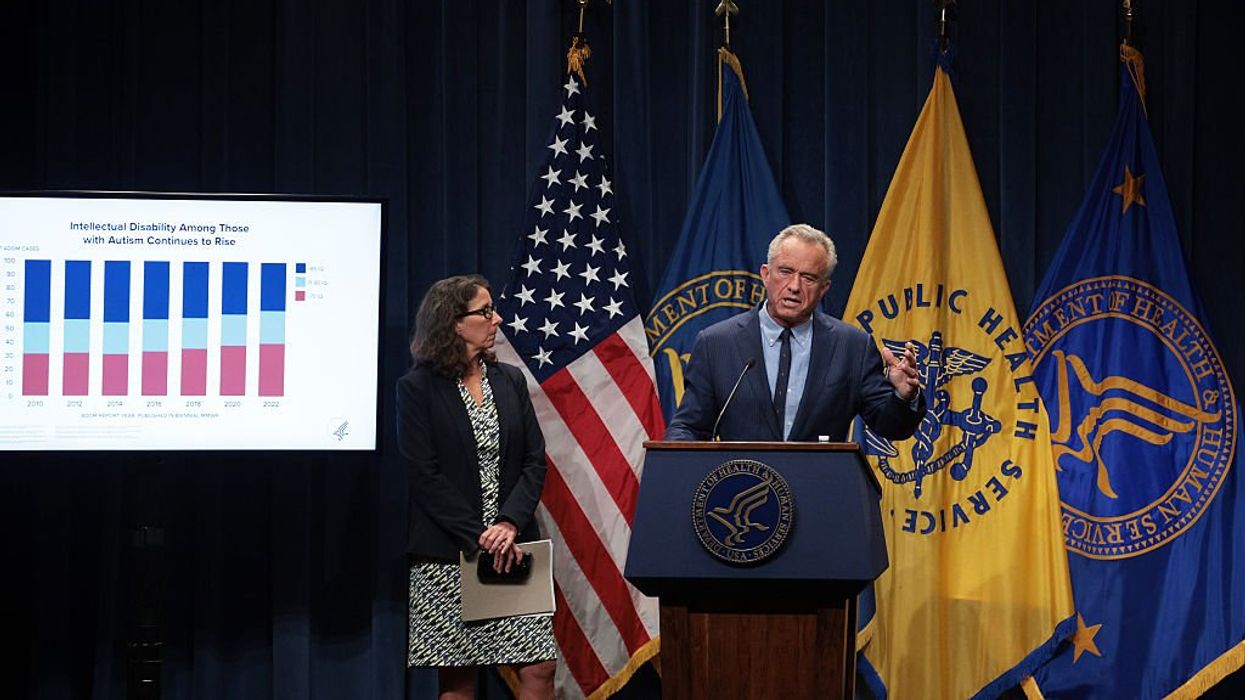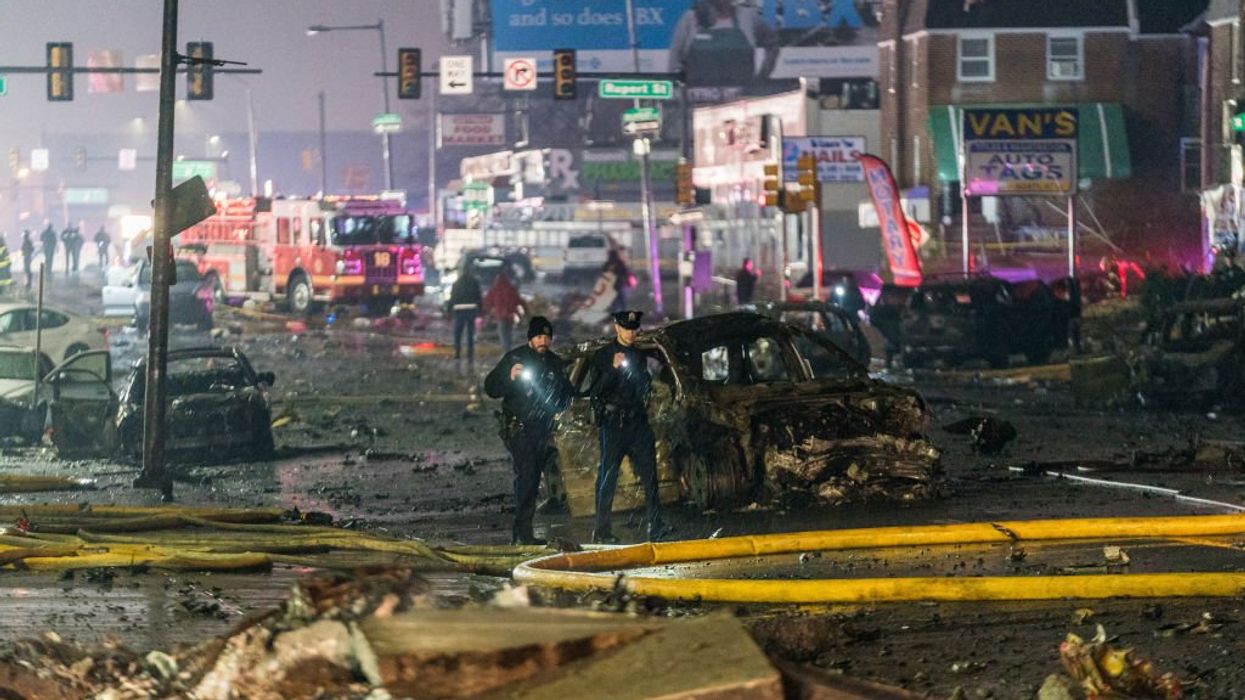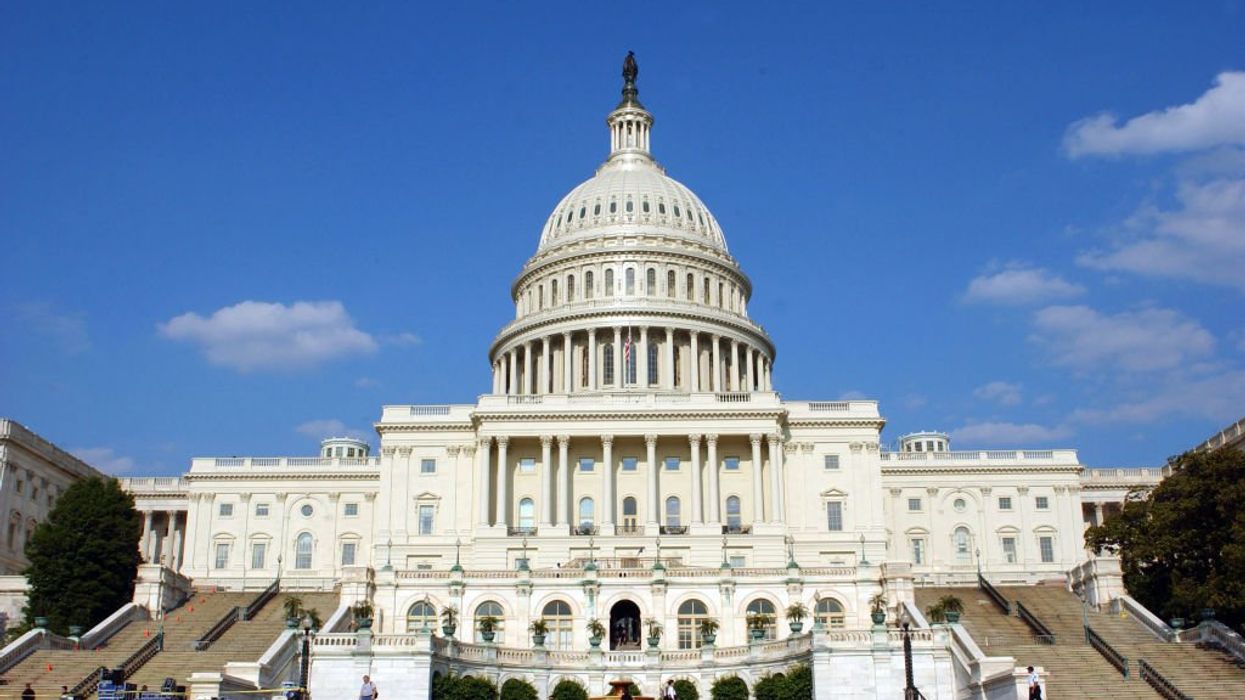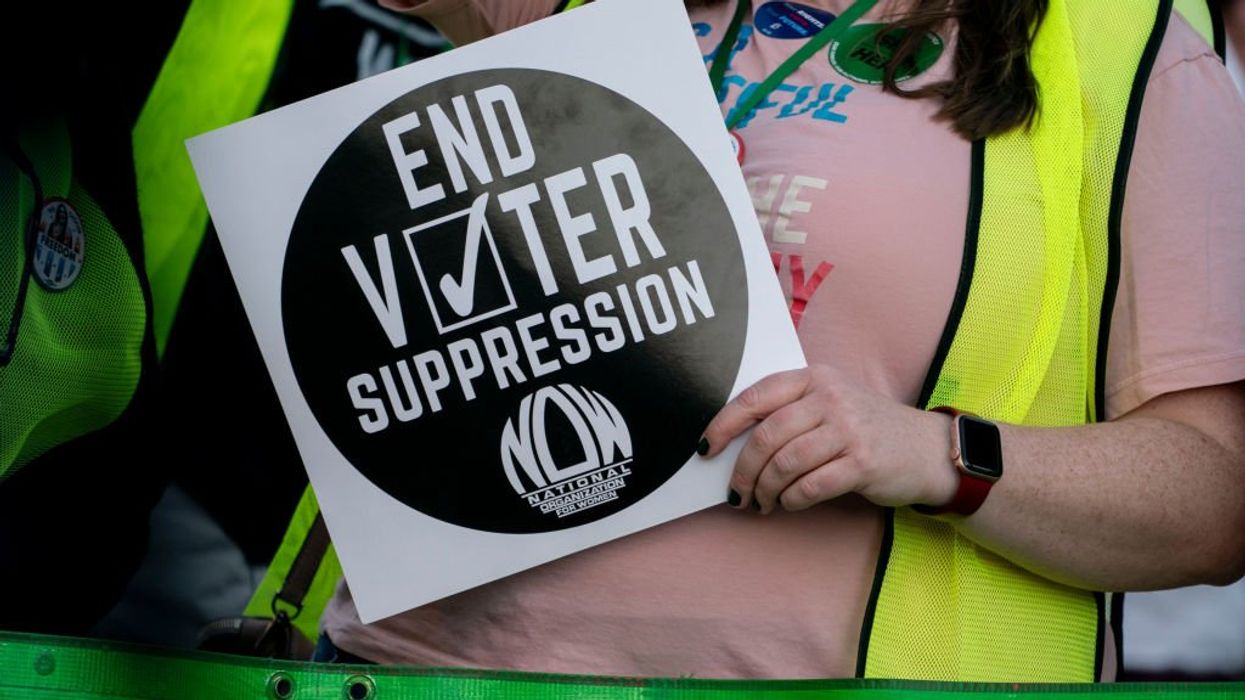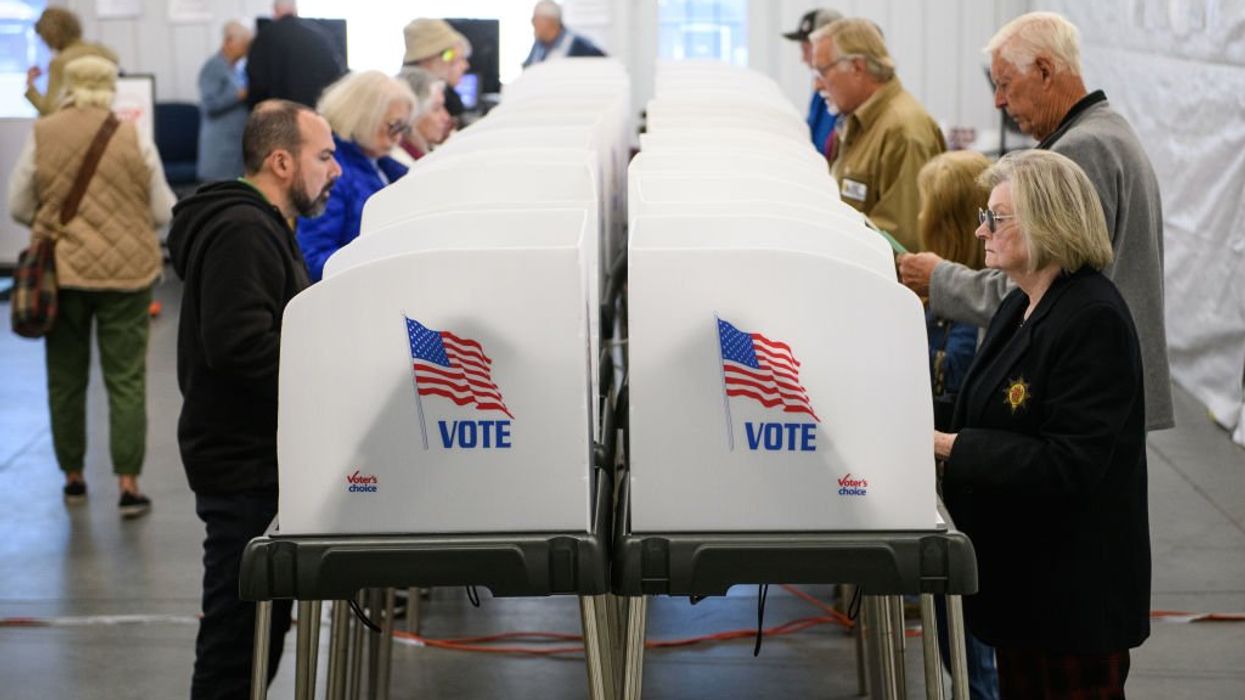Feeling overwhelmed by the endless stream of presidential polls? We've got you covered.
Stu and his team of fellow political wizzes created the Pulsecast in tandem with the Glenn Beck Program, a comprehensive view of national sentiment towards Donald Trump and Kamala Harris heading into November. They gather data from all major election polls so that you don't have to sift through individual polls to get the big picture of what's going on.
The Pulsecast doesn't cherry-pick unfavorable numbers for either Donald Trump or Kamala Harris. They're giving you the big picture, saving you a bunch of time, and effort. Think of it as your one-stop source for a complete polling picture, without the hassle of multiple clicks or biased sources.
Be sure to tune in to the Glenn Beck Program to catch Glenn and Stu's rundown of the daily Pulsecast, and check back in here for the most up-to-date Pulsecast on this page.
November 05, 2024

REMINDER: The PULSECAST attempts to put a finger on the pulse of what mainstream pollsters and data nerds are saying. It is not Glenn or Stu’s election prediction. Read more detail here.
November 04, 2024

REMINDER: The PULSECAST attempts to put a finger on the pulse of what mainstream pollsters and data nerds are saying. It is not Glenn or Stu’s election prediction. Read more detail here.
November 01, 2024

REMINDER: The PULSECAST attempts to put a finger on the pulse of what mainstream pollsters and data nerds are saying. It is not Glenn or Stu’s election prediction. Read more detail here.
October 31, 2024

REMINDER: The PULSECAST attempts to put a finger on the pulse of what mainstream pollsters and data nerds are saying. It is not Glenn or Stu’s election prediction. Read more detail here.
October 30, 2024

REMINDER: The PULSECAST attempts to put a finger on the pulse of what mainstream pollsters and data nerds are saying. It is not Glenn or Stu’s election prediction. Read more detail here.
October 29, 2024

REMINDER: The PULSECAST attempts to put a finger on the pulse of what mainstream pollsters and data nerds are saying. It is not Glenn or Stu’s election prediction. Read more detail here.
The presidential race has taken on four distinct phases since Kamala Harris entered the field. Initially, Harris experienced a surge in popularity, driven by the excitement of her campaign launch and early media enthusiasm. This "joy period" characterized August, with Harris emerging as a prominent figure in the polls, buoyed by positive coverage and events like her convention. However, as September began, the excitement started to fade, and reality set in. Voters began questioning whether Harris could truly handle the responsibilities of the presidency. By mid-September, her initial "joy bump" had faded, leaving her polling at a more level position.
Following the first debate, Harris regained momentum in late September, climbing to her highest point in the polls and capturing a slight lead. But as October progressed, the dynamic shifted yet again. Donald Trump began to surge, gradually moving from around 43% to approximately 54% in the polls, ultimately overtaking Harris. While this does not indicate a landslide in Trump’s favor, the momentum and gains he has made over October signal a notable shift in the race’s trajectory, making him a slight favorite over Harris as the month comes to a close.
October 28, 2024

REMINDER: The PULSECAST attempts to put a finger on the pulse of what mainstream pollsters and data nerds are saying. It is not Glenn or Stu’s election prediction. Read more detail here.
October 25, 2024

REMINDER: The PULSECAST attempts to put a finger on the pulse of what mainstream pollsters and data nerds are saying. It is not Glenn or Stu’s election prediction. Read more detail here.
October 24, 2024

REMINDER: The PULSECAST attempts to put a finger on the pulse of what mainstream pollsters and data nerds are saying. It is not Glenn or Stu’s election prediction. Read more detail here.
October 23, 2024

REMINDER: The PULSECAST attempts to put a finger on the pulse of what mainstream pollsters and data nerds are saying. It is not Glenn or Stu’s election prediction. Read more detail here.
October 22, 2024

REMINDER: The PULSECAST attempts to put a finger on the pulse of what mainstream pollsters and data nerds are saying. It is not Glenn or Stu’s election prediction. Read more detail here.
October 21, 2024

REMINDER: The PULSECAST attempts to put a finger on the pulse of what mainstream pollsters and data nerds are saying. It is not Glenn or Stu’s election prediction. Read more detail here.
In the arc of this presidential campaign, Kamala Harris initially saw a rise in polling numbers, peaking at around 55% after her announcement. Despite a brief lead for Donald Trump just before the debate, Harris bounced back, maintaining a favorable position through late September. However, in the past three weeks, Trump’s numbers have surged, completely erasing Harris' lead. As of now, Trump holds a 52.21percent chance of winning, compared to Harris’ 47.5 percent. This shift is significant because polling typically moves slowly and doesn’t often see such rapid changes.
Historically, polling has underestimated Donald Trump, both in 2016 and 2020. Despite his current lead, this remains a tight race, with recent polling giving him a slight edge. In both previous elections, particularly in key swing states like Wisconsin, Pennsylvania, and Michigan, the polls underestimated Trump’s support, raising the possibility that 2024 could follow a similar pattern. However, as it stands, the race is still considered a toss-up.
October 18, 2024

REMINDER: The PULSECAST attempts to put a finger on the pulse of what mainstream pollsters and data nerds are saying. It is not Glenn or Stu’s election prediction. Read more detail here.
October 17, 2024

REMINDER: The PULSECAST attempts to put a finger on the pulse of what mainstream pollsters and data nerds are saying. It is not Glenn or Stu’s election prediction. Read more detail here.
October 16, 2024

REMINDER: The PULSECAST attempts to put a finger on the pulse of what mainstream pollsters and data nerds are saying. It is not Glenn or Stu’s election prediction. Read more detail here.
October 15, 2024

REMINDER: The PULSECAST attempts to put a finger on the pulse of what mainstream pollsters and data nerds are saying. It is not Glenn or Stu’s election prediction. Read more detail here.
October 14, 2024

REMINDER: The PULSECAST attempts to put a finger on the pulse of what mainstream pollsters and data nerds are saying. It is not Glenn or Stu’s election prediction. Read more detail here.
October 11, 2024

REMINDER: The PULSECAST attempts to put a finger on the pulse of what mainstream pollsters and data nerds are saying. It is not Glenn or Stu’s election prediction. Read more detail here.
October 10, 2024

REMINDER: The PULSECAST attempts to put a finger on the pulse of what mainstream pollsters and data nerds are saying. It is not Glenn or Stu’s election prediction. Read more detail here.
Kamala Harris initially received a surge in media attention and positive coverage following her nomination, which boosted her polling numbers. However, this "boomlet" of support quickly faded as Donald Trump regained momentum, even overtaking Harris just before their first debate. Although the debate seemed to temporarily help Harris, lifting her numbers again, the impact was short-lived, and her advantage has since eroded. Polls now show a near-tie between the two candidates, with Trump once again gaining ground.
This shift in polling may also coincide with other significant events, including a hurricane response that has drawn criticism toward the Biden administration. If voters increasingly associate Harris with the perceived failures of the administration, this could further affect her standing. While it’s difficult to pinpoint one specific cause for these polling shifts, the fading of Harris's post-debate bump suggests her momentum may be weakening as Trump's numbers stabilize. Both candidates are now neck-and-neck, setting the stage for an unpredictable finish.
October 9, 2024

REMINDER: The PULSECAST attempts to put a finger on the pulse of what mainstream pollsters and data nerds are saying. It is not Glenn or Stu’s election prediction. Read more detail here.
October 8, 2024

REMINDER: The PULSECAST attempts to put a finger on the pulse of what mainstream pollsters and data nerds are saying. It is not Glenn or Stu’s election prediction. Read more detail here.
The 2024 presidential election continues to be a true toss-up. Just a couple of weeks ago, Kamala supporters could have pointed to a slight edge in her favor, but the race has since tightened significantly, with Trump holding nearly a 46% chance of winning and Harris at roughly 54 percent, according to our latest estimates. This slim margin shows just how close the race has become, essentially a coin flip.
Recent polls illustrate the unpredictable nature of the election. A New York Times poll has Harris leading by three points nationally, yet in the same poll, Trump is up by 13 points in Florida. It’s hard to reconcile such contradictory results, but they reflect the complexity and uncertainty of this race. Meanwhile, Harris's rhetoric doesn’t seem to be bridging the divide. Her recent comments comparing Trump supporters to the "basket of deplorables" narrative may further alienate a significant portion of the electorate. As we move deeper into the election season, it’s clear that anything can happen.
October 7, 2024

REMINDER: The PULSECAST attempts to put a finger on the pulse of what mainstream pollsters and data nerds are saying. It is not Glenn or Stu’s election prediction. Read more detail here.
Donald Trump has seen some improvement in recent polling. His chances have risen slightly, with current estimates giving him a 45.41 percentchance of winning—an increase from the previous week. Trump is also gaining favor in prediction markets, where bettors are giving him a 6-7 percent higher chance of victory compared to traditional polling averages and election models built by experts.
This discrepancy may be explained by the belief that Trump often outperforms his polling numbers, a pattern seen in both 2016 and 2020. While "shy Trump voters" were a significant factor in previous elections, there seems to be less of that effect this time around, with voters now more open about their support. It's also important to note that Trump is in a stronger position now than he was at similar points in his 2016 and 2020 campaigns, making the 2024 race particularly intense as polling models continue to evolve. If polling errors similar to 2020 occur, Trump could easily secure a win.
October 6, 2024

REMINDER: The PULSECAST attempts to put a finger on the pulse of what mainstream pollsters and data nerds are saying. It is not Glenn or Stu’s election prediction. Read more detail here.
No summary during the weekend.
October 5, 2024

REMINDER: The PULSECAST attempts to put a finger on the pulse of what mainstream pollsters and data nerds are saying. It is not Glenn or Stu’s election prediction. Read more detail here.
No summary during the weekend.
October 4, 2024

REMINDER: The PULSECAST attempts to put a finger on the pulse of what mainstream pollsters and data nerds are saying. It is not Glenn or Stu’s election prediction. Read more detail here.
Donald Trump currently holds a 44.03 percent chance of winning the 2024 election, a slight increase from yesterday. Despite the uptick, the race has remained fairly stable for over two weeks, with little movement on either side. While at first glance, it may seem like Kamala Harris has a more comfortable lead at 56 percent, the reality is that the margin between the two candidates is razor-thin.
This is essentially a toss-up. One could argue that Harris has a slight edge, but even that is debatable. The mainstream media might present this as her having the advantage, but in truth, the race is incredibly close. As it stands, this election could go either way.
October 03, 2024

REMINDER: The PULSECAST attempts to put a finger on the pulse of what mainstream pollsters and data nerds are saying. It is not Glenn or Stu’s election prediction. Read more detail here.
Right now, Donald Trump has a 43.84 percent chance of winning the election, with Kamala Harris at 56.16 percent. These numbers have been pretty stable for about two weeks. It might seem like Harris has a significant lead, but that’s not the case. This is essentially a toss-up, and the numbers aren’t predicting that Trump will lose by 13 points. They’re just saying there’s a slightly higher chance for Harris at this moment.
We’ll see if any major events like Hurricane Helene end up influencing the election and affecting the prospects of the candidates.
October 02, 2024

REMINDER: The PULSECAST attempts to put a finger on the pulse of what mainstream pollsters and data nerds are saying. It is not Glenn or Stu’s election prediction. Read more detail here.
The latest update before the presidential debate shows Donald Trump with a 44.09 percent chance of winning the election. This is a slight increase from the day before, but the race remains incredibly tight. In seven key swing states, Kamala Harris leads in Nevada by just 2.2 points, Wisconsin by 1.7, and Pennsylvania and Michigan by a razor-thin margin of 0.6. On the flip side, Trump leads in Arizona by 0.8, Georgia by 0.5, and North Carolina by a mere 0.2 points.
With margins this close, this election is shaping up to be one of the tightest races in modern history.
October 01, 2024

REMINDER: The PULSECAST attempts to put a finger on the pulse of what mainstream pollsters and data nerds are saying. It is not Glenn or Stu’s election prediction. Read more detail here.
No Pulsecast summary today.
September 30, 2024

REMINDER: The PULSECAST attempts to put a finger on the pulse of what mainstream pollsters and data nerds are saying. It is not Glenn or Stu’s election prediction. Read more detail here.
Recent polling data shows promising trends for Donald Trump in key battleground states like Pennsylvania and Arizona. However, Kamala Harris has gained ground in national polls, continuing the trend of Trump performing well in state-level polls while Harris leads nationally. According to current projections, Trump currently holds a 43.49 percent chance of winning the election, positioning him as a slight underdog, but it is still anyone's game in this razor-thin election.
The real surprise comes from a major shift in union support. In 1992, Bill Clinton led with union voters by 30 points, a margin that dropped to 19 points for Biden in 2020. Now, Kamala Harris holds only a 9-point lead in this group. Meanwhile, Trump has made major gains among trade school voters, moving from a 7-point deficit in 1992 to a staggering 31-point lead in 2024. This dramatic realignment reflects broader shifts in voter demographics and priorities heading into the next election.
September 29, 2024

REMINDER: The PULSECAST attempts to put a finger on the pulse of what mainstream pollsters and data nerds are saying. It is not Glenn or Stu’s election prediction. Read more detail here.
No summary during the weekend.
September 28, 2024

REMINDER: The PULSECAST attempts to put a finger on the pulse of what mainstream pollsters and data nerds are saying. It is not Glenn or Stu’s election prediction. Read more detail here.
No summary during the weekend.
September 27, 2024

REMINDER: The PULSECAST attempts to put a finger on the pulse of what mainstream pollsters and data nerds are saying. It is not Glenn or Stu’s election prediction. Read more detail here.
Donald Trump currently holds a 43.93 percent chance of winning the election, which is just a slight dip from the previous day. This minor drop seems to be driven by a single poll showing Kamala Harris with a seven-point lead—the best polling result for her entire campaign so far. However, it’s likely that this poll is an outlier, and we’ll see how it plays out in the coming days.
September 26, 2024

REMINDER: The PULSECAST attempts to put a finger on the pulse of what mainstream pollsters and data nerds are saying. It is not Glenn or Stu’s election prediction. Read more detail here.
As of today, Donald Trump has a 44.52 percent chance of winning the election. This is just a tick-down from yesterday at 45.05 percent.
Stu suspects that this slight downturn is largely due to one poll that had Kamala Harris up by seven, which has been the best poll of the entire campaign for her. He suspects that this will be an outlier
September 25, 2024

REMINDER: The PULSECAST attempts to put a finger on the pulse of what mainstream pollsters and data nerds are saying. It is not Glenn or Stu’s election prediction. Read more detail here.
Donald Trump had another strong day with his chances to win rising from 43.82 percent to 45.03 percent. This shift has effectively erased the negative decline in his polling this past month. The race is still a tossup with Kamala Harris's polling at 54.97 percent.
Trump continues to lead significantly on key issues, such as immigration, where he’s up by 21 points. This lead, coupled with the financial strain Americans are facing—like skyrocketing utility bills, food and gas prices, and inflation—begs the question: Why is the race still this close? Glenn and Stu suspect that many voters still don't believe Harris bears responsibility for the failures of the Biden presidency. One poll indicates that 19 percent of voters who say Biden's presidency was a failure are still voting for Harris.
September 24, 2024

REMINDER: The PULSECAST attempts to put a finger on the pulse of what mainstream pollsters and data nerds are saying. It is not Glenn or Stu’s election prediction. Read more detail here.
Donald Trump's chances to win have improved slightly, rising from 43 percent to 43.82 percent, marking a nearly full-point gain. While that may seem small, it's significant for these kinds of prediction models, which are designed to move slowly and reflect longer-term trends. This gain comes after Trump had initially dropped by 4.3 percent following the last debate, but his deficit has now been cut to just 2.9 percent. The New York Times/Sienna poll, a highly influential source, played a key role in this shift, showing positive results for Trump in key states like Nevada, Arizona, Georgia, and North Carolina.
Looking at the state-level breakdown, Trump's leading by up to five points in some, with North Carolina showing a two-point lead. Winning North Carolina in particular is critical, as it’s considered a must-win state. To secure a win overall, Trump will need to hold on to Georgia, North Carolina, and possibly Arizona, while also flipping one of the blue-wall states like Pennsylvania, Wisconsin, or Michigan.
September 23, 2024

REMINDER: The PULSECAST attempts to put a finger on the pulse of what mainstream pollsters and data nerds are saying. It is not Glenn or Stu’s election prediction. Read more detail here.
Today's Pollcast has Donald Trump’s chances of winning at 43.2 percent, according to aggregated polling data. This figure indicates a decline of 4.3 percent from last week and a drop of approximately 4.6 percent over a longer period. Despite this dip, many pollsters are still optimistic for Donald Trump.
These prediction models often weigh the results of higher-rated pollsters more heavily in their calculations. For example, New York Times/Siena polling is among the most reputable, and its state-level data paints a positive picture for Trump. In key battleground states like Arizona, Trump holds a 5-point lead (50 percent to 45 percent). In Georgia, Trump's ahead by 4 points (49 percent to 45 percent). In North Carolina, Trump is up by 2 points (49 percent to 47 percent). This most recent data mark a reversal from the past two to four weeks, during which polls were favoring Kamala Harris in those swing states.
Moreover, national polling has been more favorable to Trump than Harris in recent weeks. If this trend continues and Trump can sustain both national and state polling advantages, his overall outlook could significantly improve.
However, it’s crucial to note that winning Arizona, Georgia, and North Carolina alone isn't enough for Trump to secure the presidency. He would still need victories in other key states like Pennsylvania, Wisconsin, or Michigan. While his performance in these battleground states is essential, his path to victory requires success beyond just these three.
September 22, 2024

REMINDER: The PULSECAST attempts to put a finger on the pulse of what mainstream pollsters and data nerds are saying. It is not Glenn or Stu’s election prediction. Read more detail here.
As of today, Donald Trump’s chances of winning stand at 44 percent, while Kamala Harris leads with 55.8 percent, reflecting a close race. Though Harris has the advantage, this nearly 55-45 split still indicates a highly competitive contest. Such a margin is akin to a coin flip, underscoring the uncertainty of the election outcome. Despite recent polling challenges for Trump, this is far from a decisive lead for Harris, as both candidates remain within striking distance of each other.
The current polling divergence between Trump and Harris has widened over the past week, but it’s important to remember that Trump is not in a dire position. Political analysts emphasize that a race this tight makes forecasting difficult, leaving room for significant shifts as new data comes in.
September 21, 2024

REMINDER: The PULSECAST attempts to put a finger on the pulse of what mainstream pollsters and data nerds are saying. It is not Glenn or Stu’s election prediction. Read more detail here.
Donald Trump experienced a slight uptick in his chances yesterday, moving him to 44.3 percent to 44.77 percent. While it may seem minor, such daily fluctuations can be important when viewing polling trends over time.
One possible factor contributing to this uptick could be the fallout from the recent assassination attempt. Although it’s difficult to pinpoint a single cause, polling released yesterday was generally favorable to Trump on a national level. However, it’s worth noting that Kamala Harris still performed well in key swing states.
On today's episode of the Glenn Beck Program, Stu compared polling to weight loss: progress isn't always visible in the short term. With Harris enjoying strong polling recently, it's important to take a longer view to assess the direction of the race. This uptick for Trump may signal a shift, but it will take more time to see how the numbers stabilize over the coming days.


